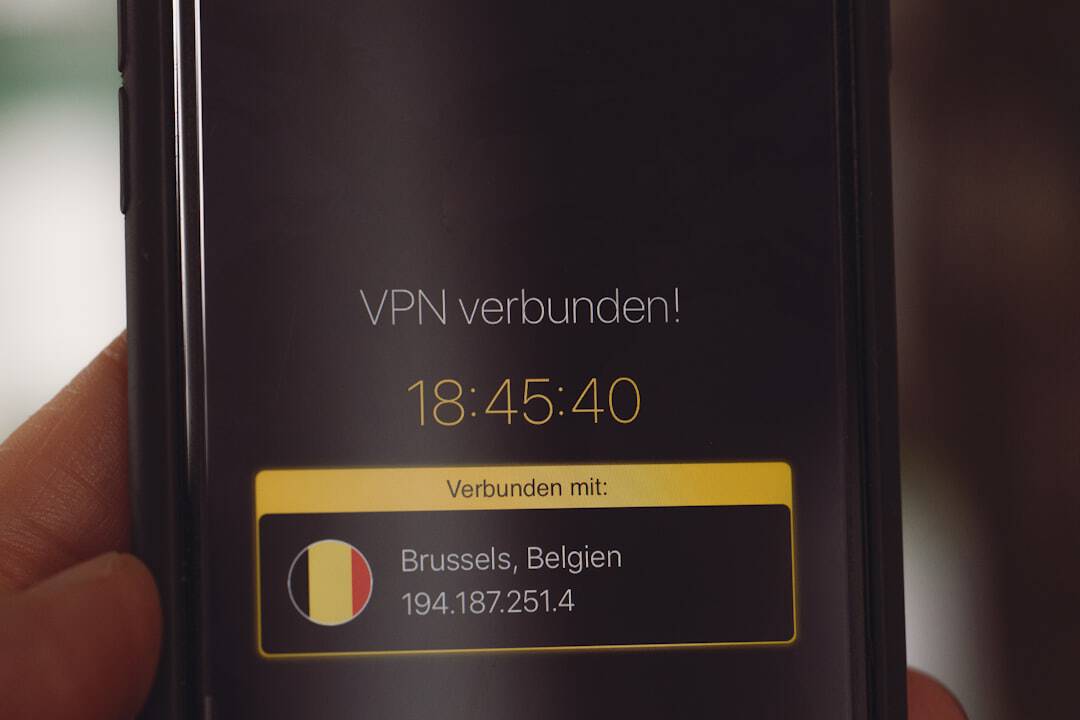Zero Trust Network Access (ZTNA) is a security framework that assumes no entity, whether inside or outside an organization’s network, should be automatically trusted. This approach requires continuous verification and authentication of every user, device, and application attempting to access network resources. ZTNA operates on the principle of “never trust, always verify,” granting access on a per-session basis only after validating the identity and security posture of the user and device.
ZTNA addresses the shortcomings of traditional network security models, such as VPNs and perimeter-based security, which assume internal network elements are trustworthy. The proliferation of remote work, cloud-based applications, and mobile devices accessing corporate networks has rendered these conventional security models insufficient in protecting against modern cyber threats. ZTNA offers a more robust approach to securing network access by emphasizing identity and context-based access control, rather than relying exclusively on network perimeters.
Key Takeaways
- Zero Trust Network Access (ZTNA) is a security model that requires strict identity verification for every person and device trying to access resources on a private network, regardless of whether they are inside or outside the network perimeter.
- Gartner’s analysis of ZTNA emphasizes the importance of continuous verification, least privilege access, and micro-segmentation to enhance security and reduce the risk of data breaches.
- Implementing ZTNA can lead to benefits such as improved security posture, reduced attack surface, better visibility and control over network traffic, and enhanced user experience through seamless and secure access.
- Challenges in adopting ZTNA include the complexity of implementation, potential impact on user experience, integration with existing infrastructure, and the need for cultural and organizational change to embrace the zero trust mindset.
- Best practices for implementing ZTNA include conducting a thorough assessment of current network architecture, prioritizing critical assets for protection, implementing multi-factor authentication, and continuously monitoring and updating access policies.
- Case studies of successful ZTNA implementation showcase how organizations have improved their security posture, reduced the risk of data breaches, and enhanced user experience by embracing the zero trust model.
- Future trends in ZTNA include the integration of artificial intelligence and machine learning for advanced threat detection, the adoption of software-defined perimeter solutions, and the continued evolution of access policies based on user behavior and risk assessment.
Gartner’s Analysis of Zero Trust Network Access
Gartner, a leading research and advisory company, has recognized the importance of Zero Trust Network Access in addressing the evolving security needs of organizations. According to Gartner, traditional security models are no longer effective in protecting against advanced threats, and organizations need to adopt a more proactive and context-aware approach to security. Gartner has identified ZTNA as a key component of a modern security strategy, as it enables organizations to enforce granular access controls based on user identity, device posture, and contextual information.
Gartner’s analysis of ZTNA emphasizes the need for organizations to move away from the traditional perimeter-based security model and adopt a more dynamic and risk-based approach to network access. By implementing ZTNA, organizations can reduce their reliance on VPNs and static network perimeters, and instead focus on continuous authentication and authorization based on the principle of least privilege. Gartner predicts that ZTNA will become a standard practice for securing remote access and cloud-based applications, as it provides a more effective way to protect against insider threats and external attacks.
Benefits of Implementing Zero Trust Network Access

Implementing Zero Trust Network Access offers several benefits for organizations looking to enhance their security posture and adapt to the changing threat landscape. One of the key benefits of ZTNA is improved security posture, as it enables organizations to enforce granular access controls based on user identity, device posture, and contextual information. This means that only authorized users with trusted devices can access specific resources, reducing the risk of unauthorized access and data breaches.
Another benefit of ZTNA is enhanced visibility and control over network access, as it provides organizations with real-time insights into user and device behavior. By continuously monitoring and analyzing access requests, organizations can detect and respond to potential security threats more effectively. Additionally, ZTNA enables organizations to reduce their attack surface by implementing micro-segmentation and least privilege access controls, limiting the potential impact of security incidents.
Furthermore, ZTNA can improve user experience by providing seamless and secure access to resources from any location or device. With ZTNA, users no longer need to rely on VPNs or complex network configurations to access corporate resources, resulting in a more flexible and productive workforce. Overall, implementing ZTNA can help organizations strengthen their security posture, reduce the risk of data breaches, and improve the user experience for remote and mobile workers.
Challenges in Adopting Zero Trust Network Access
| Challenges | Description |
|---|---|
| Complexity | Implementing Zero Trust Network Access can be complex and require significant changes to existing network infrastructure. |
| User Experience | Ensuring a seamless and positive user experience while implementing strict access controls can be challenging. |
| Visibility | Obtaining comprehensive visibility into network traffic and user behavior can be difficult in a Zero Trust environment. |
| Legacy Systems | Integrating Zero Trust principles with legacy systems and applications can pose challenges. |
While Zero Trust Network Access offers numerous benefits, there are also challenges that organizations may face when adopting this security framework. One of the main challenges is the complexity of implementing ZTNA across diverse IT environments. Organizations with legacy systems, complex network architectures, and a wide range of applications may find it challenging to integrate ZTNA seamlessly without disrupting existing operations.
Another challenge is the cultural shift required to embrace the principles of Zero Trust. Traditional security models have ingrained the concept of trusting everything inside the network perimeter, so transitioning to a Zero Trust mindset requires a fundamental shift in thinking. This may involve resistance from employees who are accustomed to more permissive access controls and may perceive ZTNA as overly restrictive.
Additionally, implementing ZTNA requires a comprehensive understanding of user behavior and device posture to effectively enforce access controls. This may involve deploying advanced authentication methods, such as multi-factor authentication and continuous monitoring, which can be resource-intensive and complex to manage. Furthermore, organizations may face challenges in ensuring interoperability between different ZTNA solutions and existing security infrastructure.
Integration with identity management systems, network devices, and cloud services requires careful planning and coordination to avoid compatibility issues.
Best Practices for Implementing Zero Trust Network Access
To successfully implement Zero Trust Network Access, organizations should follow best practices that address the challenges associated with adopting this security framework. One best practice is to start with a comprehensive assessment of the organization’s current security posture and IT environment. This includes identifying critical assets, understanding user behavior patterns, and evaluating existing access controls to determine areas for improvement.
Another best practice is to prioritize user education and change management to facilitate the cultural shift towards a Zero Trust mindset. This involves communicating the benefits of ZTNA to employees, providing training on new access control policies, and addressing any concerns or resistance to change. Furthermore, organizations should adopt a phased approach to implementing ZTNA, starting with pilot projects in less complex areas of the network before expanding to more critical assets and applications.
This allows organizations to test ZTNA solutions in a controlled environment and address any issues before full deployment. Additionally, organizations should invest in advanced authentication methods, such as multi-factor authentication and biometric verification, to enhance user identity verification and reduce the risk of unauthorized access. Moreover, organizations should prioritize interoperability when selecting ZTNA solutions, ensuring that they can seamlessly integrate with existing security infrastructure and support diverse IT environments.
Case Studies: Successful Implementation of Zero Trust Network Access

Several organizations have successfully implemented Zero Trust Network Access to enhance their security posture and adapt to modern cyber threats. One such organization is a global financial services firm that implemented ZTNA to secure remote access for its employees and contractors. By enforcing granular access controls based on user identity and device posture, the organization was able to reduce the risk of unauthorized access and data breaches while providing a seamless user experience for remote workers.
Another case study involves a healthcare provider that adopted ZTNA to protect sensitive patient data and comply with industry regulations. By implementing micro-segmentation and least privilege access controls, the organization was able to limit the potential impact of insider threats and external attacks while maintaining compliance with strict data privacy requirements. Furthermore, a technology company successfully implemented ZTNA to secure access to its cloud-based applications and protect intellectual property from unauthorized access.
By continuously monitoring user behavior and enforcing context-aware access controls, the organization was able to detect and respond to potential security threats more effectively while enabling its workforce to access resources from any location or device. These case studies demonstrate the effectiveness of Zero Trust Network Access in addressing diverse security challenges across different industries. By prioritizing user identity verification, context-aware access controls, and continuous monitoring, organizations can strengthen their security posture while enabling a more flexible and productive workforce.
Future Trends in Zero Trust Network Access
Looking ahead, several future trends are expected to shape the evolution of Zero Trust Network Access and its impact on organizational security. One trend is the integration of artificial intelligence (AI) and machine learning (ML) into ZTNA solutions to enhance threat detection and response capabilities. By leveraging AI/ML algorithms to analyze user behavior patterns and identify anomalous activities, organizations can improve their ability to detect potential security threats in real-time.
Another future trend is the convergence of ZTNA with other security frameworks, such as Secure Access Service Edge (SASE), to provide a more comprehensive approach to securing network access. By combining ZTNA with cloud-based security services, organizations can extend their security controls beyond traditional network perimeters and provide secure access to cloud-based applications from any location or device. Furthermore, the adoption of Zero Trust principles is expected to expand beyond network access to other areas of cybersecurity, such as endpoint security and data protection.
Organizations are likely to apply Zero Trust principles to secure endpoints and data repositories by enforcing granular access controls based on user identity and device posture. Moreover, as remote work becomes more prevalent, Zero Trust Network Access is expected to play a crucial role in enabling secure access for remote workers while maintaining compliance with industry regulations. By prioritizing user identity verification and context-aware access controls, organizations can ensure that remote workers can securely access corporate resources from any location or device.
In conclusion, Zero Trust Network Access represents a fundamental shift in how organizations approach network security by prioritizing identity verification, context-aware access controls, and continuous monitoring. By implementing ZTNA, organizations can strengthen their security posture, reduce the risk of data breaches, improve user experience for remote workers, and adapt to the evolving threat landscape. While there are challenges associated with adopting ZTNA, following best practices and learning from successful case studies can help organizations overcome these challenges.
Looking ahead, future trends in ZTNA are expected to further enhance its effectiveness in securing network access and extending its impact beyond traditional network perimeters.
If you’re interested in learning more about the future of the metaverse industry, Gartner has also published an article on the topic. You can read it here. Gartner’s insights on the metaverse industry projections can provide valuable context for understanding the potential impact of zero trust network access in this evolving digital landscape.
FAQs
What is Zero Trust Network Access (ZTNA)?
Zero Trust Network Access (ZTNA) is a security framework that requires strict identity verification for every person and device trying to access resources on a private network, regardless of whether they are inside or outside the network perimeter.
How does ZTNA differ from traditional network security approaches?
Traditional network security approaches typically rely on perimeter-based security measures, such as firewalls, to protect the network. ZTNA, on the other hand, assumes that the network is already compromised and focuses on verifying the identity of users and devices before granting access to resources.
What are the key principles of ZTNA?
The key principles of ZTNA include the principle of least privilege, where users and devices are only granted access to the specific resources they need, continuous authentication to verify the identity of users and devices throughout their session, and micro-segmentation to isolate and protect critical resources.
What are the benefits of implementing ZTNA?
Some of the benefits of implementing ZTNA include improved security posture, reduced attack surface, better visibility and control over network access, and the ability to support remote and mobile users without compromising security.
What are some ZTNA solutions recommended by Gartner?
Gartner has recommended several ZTNA solutions, including software-defined perimeter (SDP) solutions, secure access service edge (SASE) platforms, and zero trust network access platforms offered by various vendors in the cybersecurity market.











Leave a Reply